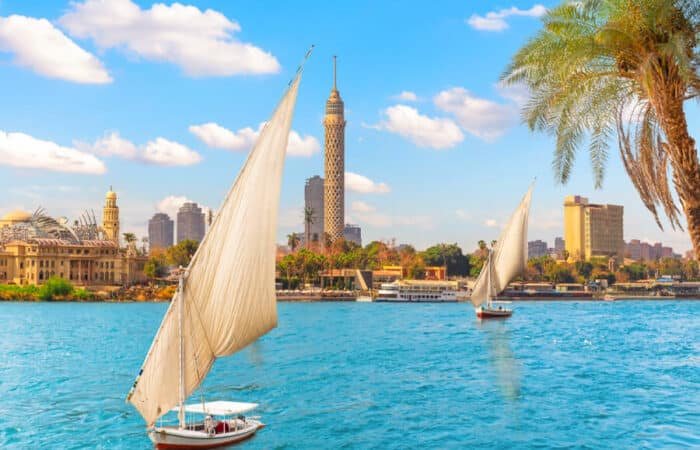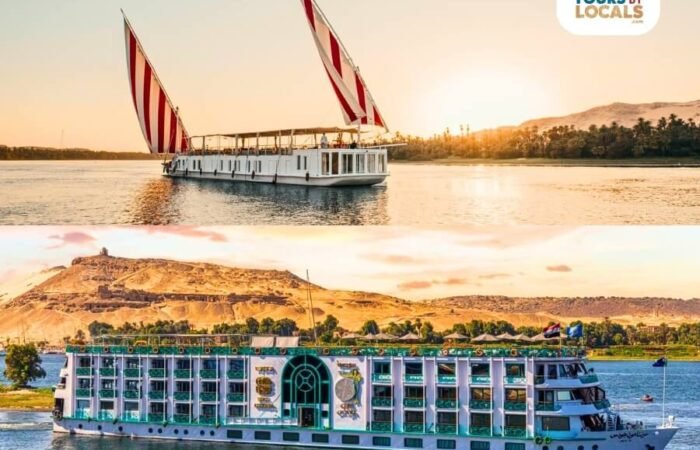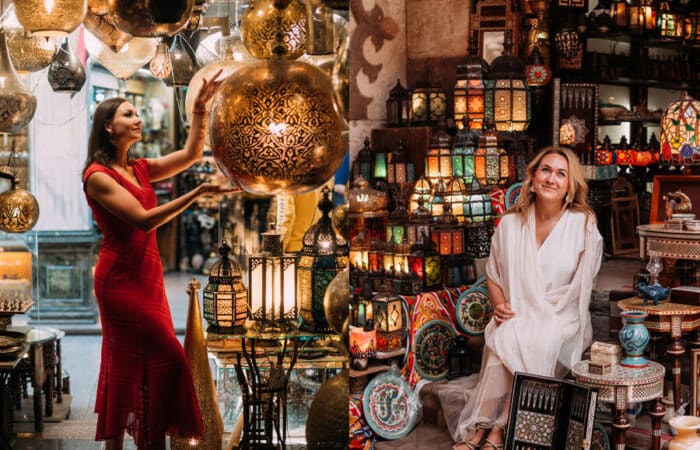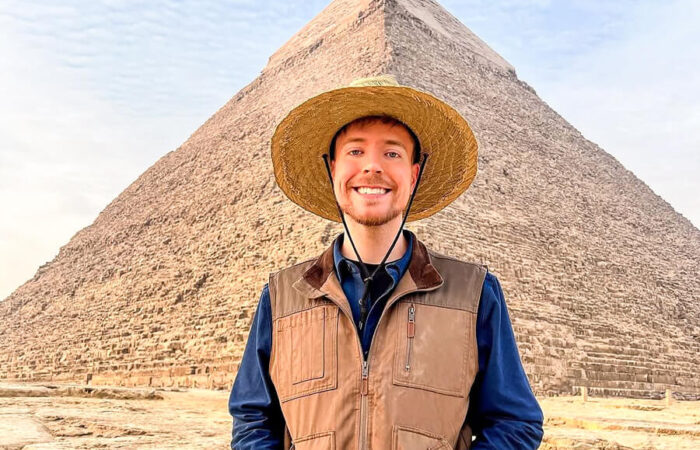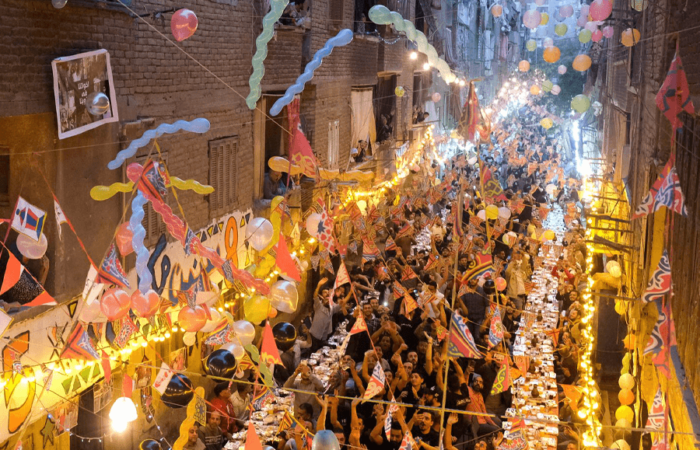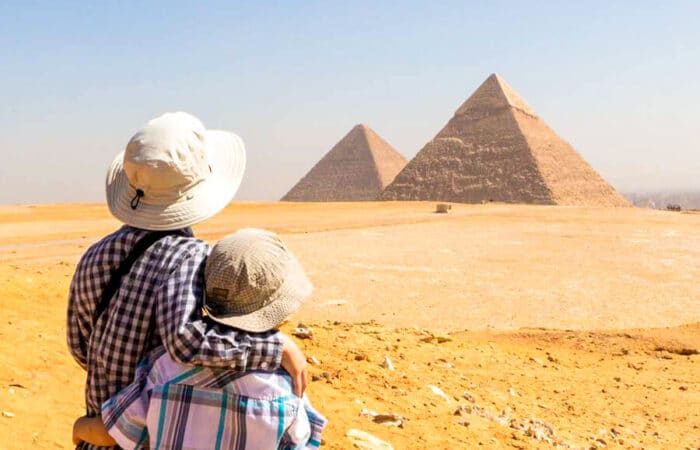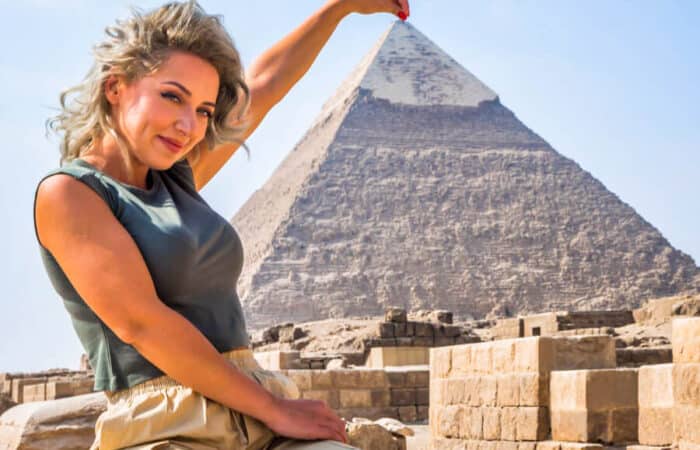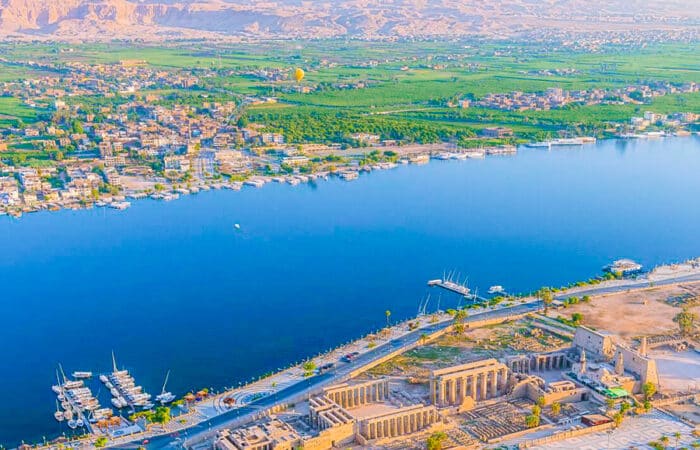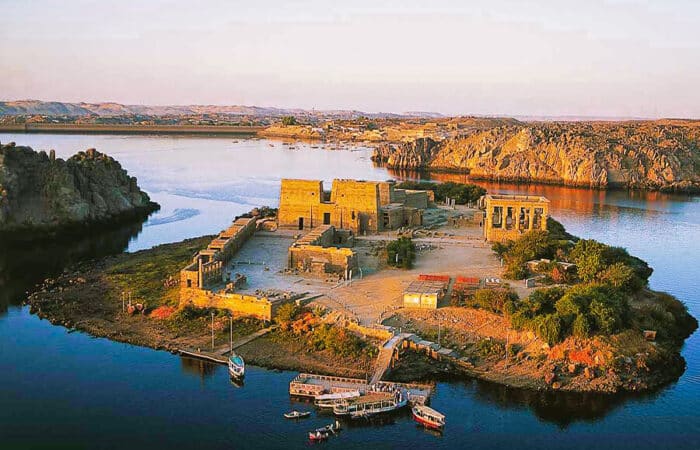Have you ever wondered how a single route can stitch villages, monasteries, and ancient caves into one living story? I asked that too when I first set out to walk the official 25-stop route mapped by Egypt’s Ministry.
I’ll guide you through the places that still hold wells, springs, and tiny sanctuaries—from Matariyah’s famed tree to Old Cairo’s Abu Serga cave and the Hanging Church. You’ll feel the stone steps under your palm and hear courtyard birds as I point out where the route links Delta towns, Cairo’s sacred core, and Upper Egypt monasteries like Wadi El Natrun and Jabal al-Tayr.
With Egypt Tours by Locals as your on-the-ground guide, permissions, timings, and local tips are handled so you can focus on meaning and rhythm rather than logistics. Expect clear lists and smart routing that turn this long story into an effortless, moving journey.
Key Takeaways
- Official 25-stop route ties Delta, Cairo, Middle, and Upper Egypt into one coherent pilgrimage.
- Must-see sites include Matariyah, Abu Serga, the Hanging Church, Wadi El Natrun, and Al-Muharraq.
- I offer hands-on tips for timing, shade spots, and sensory details from decades of walking these lanes.
- Egypt Tours by Locals provides local permits, timing help, and friendly experts on the ground.
- By the end, you’ll be ready to plan a respectful, well-paced family journey on this historic route.
What Is the Holy Family Trail and Why It Matters Today

This officially mapped route follows a famous flight from power and preserves place-based memory for pilgrims and locals alike.
I define the holy family route as the 25-station itinerary that traces Joseph’s flight after a warning about King Herod, as told in the Gospel of Matthew. The path is kept alive by Coptic Christian tradition and marked by churches, monasteries, wells, and caves.
It matters because these sites are not museum pieces. They host living worship—hymns, incense, and daily rites—and they shape local life. Many communities still gather each year on June 1 for the Entry celebration.
- The route links place and faith: springs, resting caves, and processional courtyards.
- Modern access makes visits easier while local tradition protects memory.
- Art, charity, and hospitality spring from the same story that drew pilgrims for centuries.
I’ll help you turn reverence into respectful choices on a family journey or a quiet, holy family journey—so your visit supports, not shadows, these living communities.
Timeline at a Glance: From King Herod’s Decree to the Return Journey
Here’s a short, scannable timeline that turns centuries of travel into practical trip planning notes.
- Departure: A warning to Joseph about King Herod sends the holy family away with the infant and the young child for safety.
- Early waypoints: They pass northern Sinai and Farama, then move through Delta towns where wells and springs are remembered as small miracles.
- River crossings: The family crossed the nile at key moments. In Maadi, they boarded a boat—look for worn stone steps tied to that crossing tradition.
- Old Cairo refuge: Sheltering in a cave that later became Abu Serga marks one long, still-visible stop among neighboring churches.
- Long stay: Over several years, they moved often; records and tradition suggest about three to three-and-a-half years, with the longest spells near Assiut.
- Return: After Herod’s death, an angel appeared to Joseph with clear instructions, and the return journey retraced parts of the route northward. The repeated crossed nile moments show how the river shaped pace and direction.
I close this timeline by noting that Egypt Tours by Locals can turn these milestones into a practical, respectful route you can follow on the ground.

Holy Family Trail in Egypt
I map the route’s main clusters so you can see how about 25 stops form visitor-friendly segments across the country.
Today, improvements like landscaping, lighting, signage, and better road access make visits smoother for modern travelers.
Sites group naturally: Delta towns (Sakha, Samanoud), the Wadi El Natrun monasteries, Cairo’s Matariyah and Old Cairo, Maadi river crossings, Middle Egypt cliffs at Jabal al-Tayr and Hermopolis, and Upper Egypt hubs like Al-Muharraq and Drunka.
- I show which clusters are easiest for day trips and which need overnight stays.
- You’ll learn where access and signs are strong, and where the mood stays quiet and rustic.
- Early Christian foundations and fourth-century monastic roots are visible at many sites—a history that visitors can still feel.
With Egypt Tours by Locals, you never have to guess about permissions or timing. I plan sequences that ease pace and deepen experience so your holy family journey or family journey fits your time and interests.
The Official Route: How the 25 Sites Connect Across the Country
From Delta wells to Upper Nile monasteries, the 25 stations form a mapped sequence that you can tackle in neat segments.
I map the route as clear, modular days so you can pace your visit and match each location to real travel time. The full course runs roughly 3,000–3,500 km, launched publicly in 2022 with phased enhancements over the following years.
Break the network into natural parts: Delta entries (Farama, Tel Basta, Samanoud, Sakha); the desert arc around Wadi El Natrun and its four surviving monasteries; Cairo’s cluster—Matariyah, Coptic Cairo (Abu Serga and the hanging church), and Maadi river steps; Middle Egypt (Jabal al-Tayr, Hermopolis); and the Upper Egypt finale at Al-Muharraq and Drunka.
- Delta day: compact sites that introduce the journey with wells and quiet churches.
- Desert arc: monastic libraries, frescoes, reflective stops.
- Cairo cluster: varied atmospheres—tree, cave, hanging church, and river.
- Middle and Upper days: cliffside sites and long-standing monasteries that close the loop.
| Segment | Key Sites | Typical Time | Character |
| Delta | Farama, Tel Basta, Samanoud, Sakha | Half–full day | Wells, small churches, village pace |
| Desert Arc | Wadi El Natrun (4 monasteries) | Full day | Monastic, reflective, frescoes |
| Cairo to Upper | Matariyah, Old Cairo, Maadi, Jabal al-Tayr, Al-Muharraq | Multi-day | A mix of urban, river, cliff, and monastery |
Plan around daylight and service times. Some moments belong first to the local community, and you’ll get more from the journey if you respect those rhythms.
Key Stops on the Official Route: A Listicle of Must-Visit Sites
Here are the key sites you won’t want to miss—each one a short story of water, shelter, and devotion.
- Tel Basta — a spring that burst forth. Compact, easy to visit, and a vivid opening note for the journey.
- Mostorod (al‑Mahamah) — a church built over a revered well. Visitors see baptism scenes and living rites that feel immediate.
- Samanoud & Sakha — Delta stops with a granite trough, village bread culture, and a remembered footprint that feels intimate.
- Wadi El Natrun — four desert monasteries. Frescoes at Al‑Sourian and quiet courtyards slow your pace and invite reflection.
- Matariyah / Ain Shams — Mary’s Tree and balsam-scented shade. A calm oasis inside the city that smells like history.
- Old Cairo — Abu Serga’s cave church and the Hanging Church. Stone steps, icons, and layers of worship across centuries.
- Maadi — Nile steps and a found 1976 Bible. A serene riverside pause where the current seems to hold memory.
- Jabal al‑Tayr & Hermopolis — cliff-top sanctuaries and ancient ruins; here ruins and devotion meet on rocky ground.
- Al‑Muharraq & Drunka — long stays and lively processions. These Upper stops feel both domestic and majestically old.
Plan with me—Egypt Tours by Locals to link these sites into calm, coherent days so you savor each place rather than rush past it.
| Site | Highlight | Typical Visit | Why Go |
| Tel Basta | Spring | 30–45 minutes | Origins of the route: compact and photo‑ready |
| Wadi El Natrun | Four monasteries, Al‑Sourian frescoes | Full day | Monastic art, manuscripts, quiet |
| Old Cairo | Abu Serga cave, Hanging Church | 1–2 hours | Deep history, active worship |
| Al‑Muharraq / Drunka | Long stay sites, processions | Half–full day | Living tradition and large gatherings |
Old Cairo’s Sacred Core: Babylon Fortress to the Hanging Church
Start where stone meets story. I always begin my Old Cairo walk at Abu Serga, descending into the cave where the holy family sought refuge for about three months. The space is small and quiet; you can feel how shelter and prayer shaped the site.
In the crypt, a well still gives a sign of life—this water sustained those who sheltered here. Look for stones set under glass; many locals touch them as if reaching back to the child they remember.
Step out and follow the Roman fortress lines. Babylon’s towers cradle lanes that lead up to the Hanging Church. The hanging church sits between fortress towers, its wooden ceiling and icons glowing in softened light. This late fourth-century church virgin landmark anchors a living pilgrimage hub.
Timing matters: come early or between services to find quiet. Dress modestly, move slowly in crowded naves, and avoid flash photography—small courtesies go far. Vendors cluster at entrances; walk past them, and the calm returns inside.
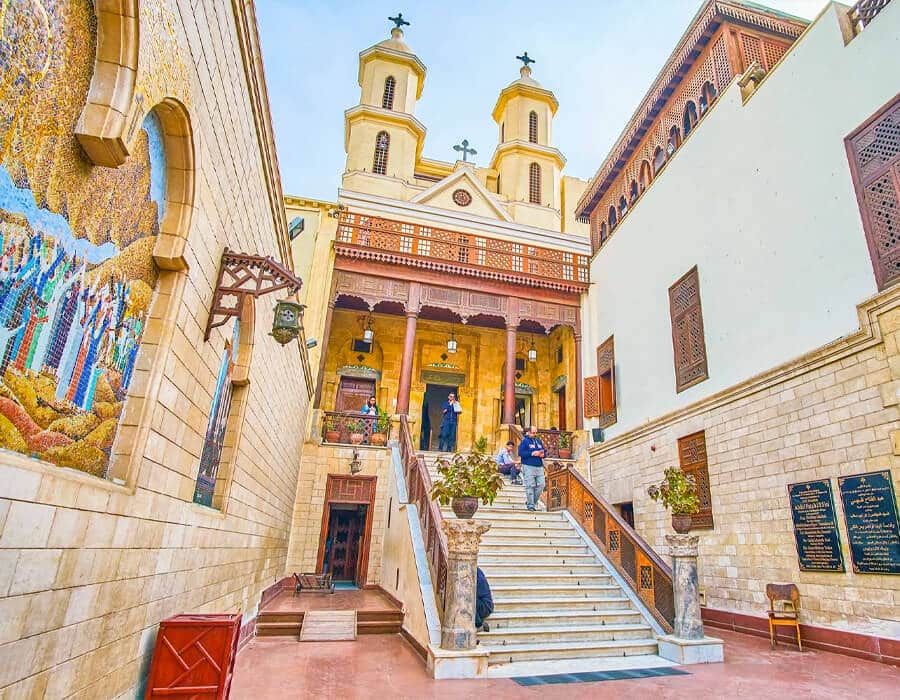
Tip: I time this cluster with Egypt Tours by Locals so you move from cave to fortress views without the crush.
| Stop | Feature | Visit Time | Etiquette |
| Abu Serga | Cave crypt, well, protected stones | 30–45 minutes | Quiet voice, no flash, modest dress |
| Fortress lanes | Roman stones, viewpoints | 15–30 minutes | Respect local traffic, watch the steps |
| Hanging Church | Wooden ceiling, icons, late 4th century | 45–60 minutes | Enter between services, no large bags |
Matariyah, Ain Shams, and Mary’s Tree: Water, Balsam, and Living Memory
At Mary’s Tree, the city quiets; leaves and light set a gentle pace for visiting this small site.
I love the first step into shade—branches that seem to whisper the name of the Virgin Mary as the breeze moves through them. The scent of balsam is faint but present, a sensory link to the old story about washing clothes here and a sapling taking root.
Nearby, a well is still part of local memory. People touch the stones and pause—water and blessing pair in a simple, human way that feels very today.
The small complex is tidy: fresh signage, clean paths, and benches that invite a slow minute between city stops. Pair this visit with nearby Ain Shams; ask quietly about any little chapels that recall the Virgin Mary memory.
- Best time: early morning light for photos and quiet worship.
- Pacing: weave this before or after Old Cairo to balance crowds and calm.
- Local life: expect families; be friendly and respectful.
- Logistics: Egypt Tours by Locals will provide timely transport so your visit stays unhurried.
| Feature | What to Expect | Visit Time | Tip |
| Mary’s Tree | Shaded grove, balsam scent | 15–30 minutes | Gentle photos; avoid flash near worshipers |
| Associated Well | Stone is well tied to the blessing tradition | 5–10 minutes | Observe respectfully; don’t drink without asking |
| Ain Shams markers | Small chapels, local plaques | 20–40 minutes | Ask a guide about opening times |
Practical note: Move slowly. The site rewards quiet attention and offers a compact, meaningful stop on a larger route that links urban memories to older, rural pauses.
Maadi: Where the Holy Family Crossed the Nile toward Upper Egypt
Stand on the Maadi embankment and you can almost hear oars striking water as a small boat nudges off into the current.
I visit the Church of the Virgin Mary here because it marks the exact location where the group boarded a boat and the route turned south. A glass case holds a Bible found near the river in 1976, opened to Isaiah 19:25—a quiet, moving relic.
The stone steps that lead down to the river are often gated. Even closed, they give you a sense of place: the pull of the water, the slope of the bank, the thought that the holy family crossed here with an infant held close.
- I linger in the nave, give space to worship, and ask before taking photos.
- Pair Maadi with Old Cairo or a southbound day to set your pace toward Upper reaches.
- For families, this stop is gentle—shade, breezes, and a short story you can tell a child.
- Many visitors ask where the family crossed the nile; this location answers heart and map.
| Feature | What to expect | Visit time |
| Church Virgin Mary | Icons, glass-encased Bible, open nave | 20–30 min |
| River steps | Gated at times; strong sense of river crossing | 5–10 min |
| Practical note | Best visited early for calm water and open doors | Plan with a guide |
Tip: I book this stop with Egypt Tours by Locals so the church is open and the river is calm. We move quietly, respect worship, and make space for the moment the route once paused to cross.
Delta & Desert Monastic Heartland: Wadi El Natrun and Beyond

Wadi El Natrun feels like a long breath—four active monasteries, faint bells, and corridors that hold centuries of prayer.
The site hosted dozens of monasteries from the early 4th century; four remain open to visitors today. Walk slowly. Dress modestly. Speak softly. These simple courtesies honor living worship and local routines.
I suggest visiting two monasteries before lunch and two after. That pacing leaves room for a quiet tea with a monk if invited and time to sit in sunlit courtyards.
- Al‑Sourian: medieval frescoes were carefully uncovered—colors that read like memory on plaster.
- Water matters here: tradition recalls a desert spring. Wherever water appears, stories follow.
- Expect long corridors, icons, and small libraries; accept hospitality with warmth.
| Feature | What to Expect | Visit Timing | Visitor Tip |
| Monasteries (4 active) | Prayer schedules, cloisters, frescoes | Half–full day | Respect service times; ask before photographing |
| Al‑Sourian frescoes | Medieval pigments, restored panels | 20–40 minutes | Look for guides who explain scenes |
| Spring tradition | Remembered water source, quiet stories | 5–15 minutes | Listen to local accounts; water is symbolic |
The trail signage has improved, but I handle navigation so you can focus on stone textures, incense, and the calm of prayer. Let this place slow your pace; it rewards unhurried walking and quiet attention.
Middle Egypt Milestones: Minya’s Jabal al-Tayr and Ancient Hermopolis
Perched above the Nile, Jabal al‑Tayr’s cliff church feels like a pause in the long southern story. The Church of the Blessed Virgin crowns a ledge; a tiny cave below is venerated because the holy family stayed and prayed there for years. Today, paved roads and parking make the approach easy, yet the core of the site stays raw and intimate.
I let the nave slow me. Carvings, massive pillars, and a quiet attendant who points out earlier years’ marks make the visit rich. Allow time to sit—two short periods of silence will repay you.
Hermopolis (Al‑Ashmunein) follows well. Sunlit ruins meet legends of toppled idols and miracle stories told by early pilgrims. Security checks may appear on this stretch; be patient and carry ID.
- A cliff sanctuary in the morning, ruins in the afternoon, works best.
- Modest dress and calm movement help you fit into daily worship rhythms.
- With Egypt Tours by Locals, you’ll have time for reflection, photos, and smooth check‑ins.
| Site | Feature | Typical Visit | Access Notes |
| Jabal al‑Tayr | Cliff church, cave veneration | 1–1.5 hours | Paved road, parking; allow quiet time |
| Hermopolis | Ruins, pilgrimage legends | 1–2 hours | Sun exposure; possible security checks |
| Pacing | Paired day plan | Half–full day | Start early; bring water and modest clothing |
Upper Egypt Highlights: Assiut’s Al-Muharraq and Drunka

Assiut’s river plain opens to a pair of sites that feel both intimate and grand. At Al‑Muharraq, the air holds a hush—locals call it the “Second Bethlehem.” Tradition says the holy family stayed here for six months, and some point to an early church that claims very old foundations.
A sealed well sits beneath a chapel; a monk may lead you there and tell simple stories of prayers answered over the years. Tradition also records that an angel appeared joseph nearby, giving clear instructions that closed this long chapter.
Nearby Drunka shifts tone. You climb toward large mountain monasteries and caves linked to Joseph, the Virgin Mary, and the child. Crowds, processions, and modern apparitions give the place a joyful, communal energy.
- Al‑Muharraq: hush, long stay, early church claim, sealed well.
- Drunka: caves to visit, stair climbs, lively song, and processions.
- Practical: dress for sun and stairs; bring water and a shawl; allow time to rest after ascent.
| Site | Character | Visit Note |
| Al‑Muharraq | Quiet, reflective | Allow time for the chapel and the monk’s accounts |
| Drunka | Large, celebratory | Wear comfortable shoes; expect crowds during feasts |
| Logistics | Permissions & pacing | Egypt Tours by Locals coordinates timing and transitions |
I pace this day so you feel the intimacy of Al‑Muharraq and the expansive energy of Drunka. With a local guide, you won’t miss small chapels, sealed wells, or the steps leading to those sacred caves.
Experiences by Theme: Churches, Monasteries, Wells, and Sacred Caves
Pick what moves you most—water, stone shelters, or liturgy—and I’ll show how to pair sites for a clear day plan.
Wells & water — Pair Tel Basta with Mostorod and Old Cairo’s crypt well. These three small sites show how water shaped shelter and ritual. They work well as a half‑day loop with easy walking and photo stops.
Cave seekers — Thread Abu Serga, Jabal al‑Tayr, and Drunka. Each cave has a different mood: city hush, cliff solitude, and mountain bustle. Wear sturdy shoes and allow quiet time at each site.
Icon and art lovers — Combine the Hanging Church with Wadi El Natrun’s frescoed monasteries. This arc rewards slow looking and short chapel visits. Bring a notebook for motifs you want to study later.
Monasteries — Spend a full day in the desert monasteries, then add Al‑Muharraq as an anchoring stop. Expect cloisters, simple meals, and long courtyards that invite reflection.
- Architecture fans: mix fortress walls, cliff churches, and village chapels for contrast.
- Make it a family journey: I tailor pacing, mobility needs, and prayer windows so everyone enjoys the day.
- I weave tradition and logistics so you arrive when each site breathes easiest.
| Theme | Suggested Stops | Best Pace |
| Water & Wells | Tel Basta, Mostorod, Old Cairo crypt well | Half‑day, easy walking |
| Caves | Abu Serga, Jabal al‑Tayr, Drunka | Day plan, moderate walking |
| Icons & Monastic Art | Hanging Church, Wadi El Natrun, Al‑Muharraq | Full day, reflective visits |
Tip: Whether you choose a week of themes or a weekend of highlights, I’ll shape your journey holy around your pace, weather, and local tradition so every stop feels intentional.

When to Go: Best Seasons, Feast Days, and Crowd Patterns
Plan with the calendar—months, weekdays, and feast days all change what you’ll see and hear.
October through April delivers milder weather and easier walking. Days are cooler and visitors move more slowly—perfect for long courtyard visits. Summer brings heat, but early starts, shaded breaks, and short afternoon rests keep days manageable.
Knowing seasonal considerations will help you choose the best month for your trip to Egypt.
Feast days are joyous and full of music. June 1 (24 Pashons) draws large gatherings across the route; expect processions, singing, and lively crowds. If you want celebration, time your trip then. If you want silence, pick a weekday in the cooler months.
Over the years, site access has improved—signage and paths are better today—but timing still matters. Major monasteries swell at festivals, so I often steer visitors into quieter courtyards just as the main ceremonies calm down.
- Weekdays usually mean easier parking and softer soundscapes.
- Early mornings work best for crypts and small chapels.
- Late afternoon light is lovely for crossing days like Maadi—ideal for reflection after the family crossed this river.
- If your calendar is fixed, I’ll tune the family trail to your window so you find quiet even on busy dates.
| Season | What to Expect | Best Timing |
| Oct–Apr | Milder weather, fewer crowds, long walking days | Weekdays, early mornings |
| May–Sept | Hotter, shorter morning windows; lively summer festivals | Start at dawn; plan shaded breaks |
| Feast Days (June 1) | Processions, music, and large gatherings at monasteries | Join the celebration or avoid if seeking quiet |
How to Plan Your Journey with Egypt Tours by Locals
Start by letting me plan the map — I turn 25 scattered stops into a calm, doable route that matches your travel days and energy.
We build each holy family journey as a custom plan. You tell me how many days you have—two, five, or ten—and I balance must-see sites with pockets of rest and prayer.
- Full logistics: transport, timing, and permits where needed so doors are open when you arrive.
- Local guides: experts who know when to linger, when to move, and how to greet hosts with a warm salaam.
- Accessibility: ramps, shade stops, and stair alternatives are planned for family egypt groups and older travelers.
- Etiquette briefing: modest dress, photo norms, and site customs so you always feel welcome.
Across the country, the 25 stations have varied hours and security norms. I coordinate permissions and sequencing so you meet sites at the right moment and avoid locked gates.
| Service | What I do | Why it helps |
| Custom route | Map must‑see sites and rest pockets | Keeps your pace calm and meaningful |
| Permissions & transport | Handle permits, drivers, and timing | Arrive when sites are open and uncrowded |
| Local guide | Expert narration, greetings, and etiquette | Deeper access and smoother days |
Reach out to Egypt Tours by Locals and I’ll help you shape a journey that feels like yours—clear, serene, and built around real sites and daily rhythm.
On-the-Ground Logistics: Getting Around, Safety, and Permissions

Start here with clear, practical steps that make getting around straightforward and low-stress.
I plan routes by location clusters to cut drive time and keep your days gentle—Delta, Cairo, Middle Egypt, then south. This helps you move between sites without rushed transfers.
Today, many sites have smoother access roads and clearer signs, but a local driver still saves time and stress. Roads improve each season, and short detours are common during renovations.
Expect standard security at major churches; a quick metal detector scan is common and courteous. In some Middle and Upper areas, officials may escort foreign visitors for brief check‑ins.
- Renovations can close a nave or cave; we shift to a nearby part of the route.
- Carry a light scarf, water, and small bills for offerings; always ask before photographing people.
- Over the years, I’ve learned that patience is your best travel tool—arrivals feel better, unrushed.
| Issue | What to Expect | Practical Tip |
| Access roads | Improved signs, some gravel stretches | Use clustered days to reduce driving |
| Security | Metal detectors at major churches | Pack light; have ID ready |
| Local escorts | Occasional official check‑ins | Be patient; follow directions |
Final note: I arrange permits and timing so you enjoy each part of the story rather than manage logistics. You’ll arrive prepared, calm, and ready to be present as a visitor to this country’s living sites.
Respectful Travel: Coptic Etiquette and Cultural Insight
Respectful visits begin with small, clear choices that honor local worship and living memory.
I ask visitors to dress simply: shoulders and knees covered. This small gesture shows care for local tradition and eases entry to active church spaces.
Lower your voice, remove hats, and tuck phones away. Soft speech and stillness help you feel the place and let worship continue without interruption.
- Photos: Ask first. Some churches welcome pictures at certain times; many do not allow cameras near altars or icons.
- Offerings: Optional but common—give what feels right, quietly, without expectation.
- Processions & baptisms: Step aside and watch respectfully; these moments belong to the community.
- Greetings: Learn a simple “salaam” or “peace.” A warm word opens doors fast on a family visit.
In villages, patience and a smile work better than strict schedules. I brief every group before we arrive, so you always feel prepared and welcomed on this journey holy family.
Conclusion
You’ve just traveled, by words, from Old Cairo’s crypt to Upper Egypt’s mountain monasteries. The holy family story lives in stone, water, and song—each stop a small doorway into community life. Across the route, an angel marks the closing of the long arc and the return that follows.
Whether you have two days or ten, this holy family Egypt route can become your own thread through time. I’ll help you pick the right stops, hours, and pace so the journey feels personal and gentle.
Ready to plan your family journey? Reach out to Egypt Tours by Locals and I’ll craft a calm, heartfelt plan for your next step along the holy family trail.


